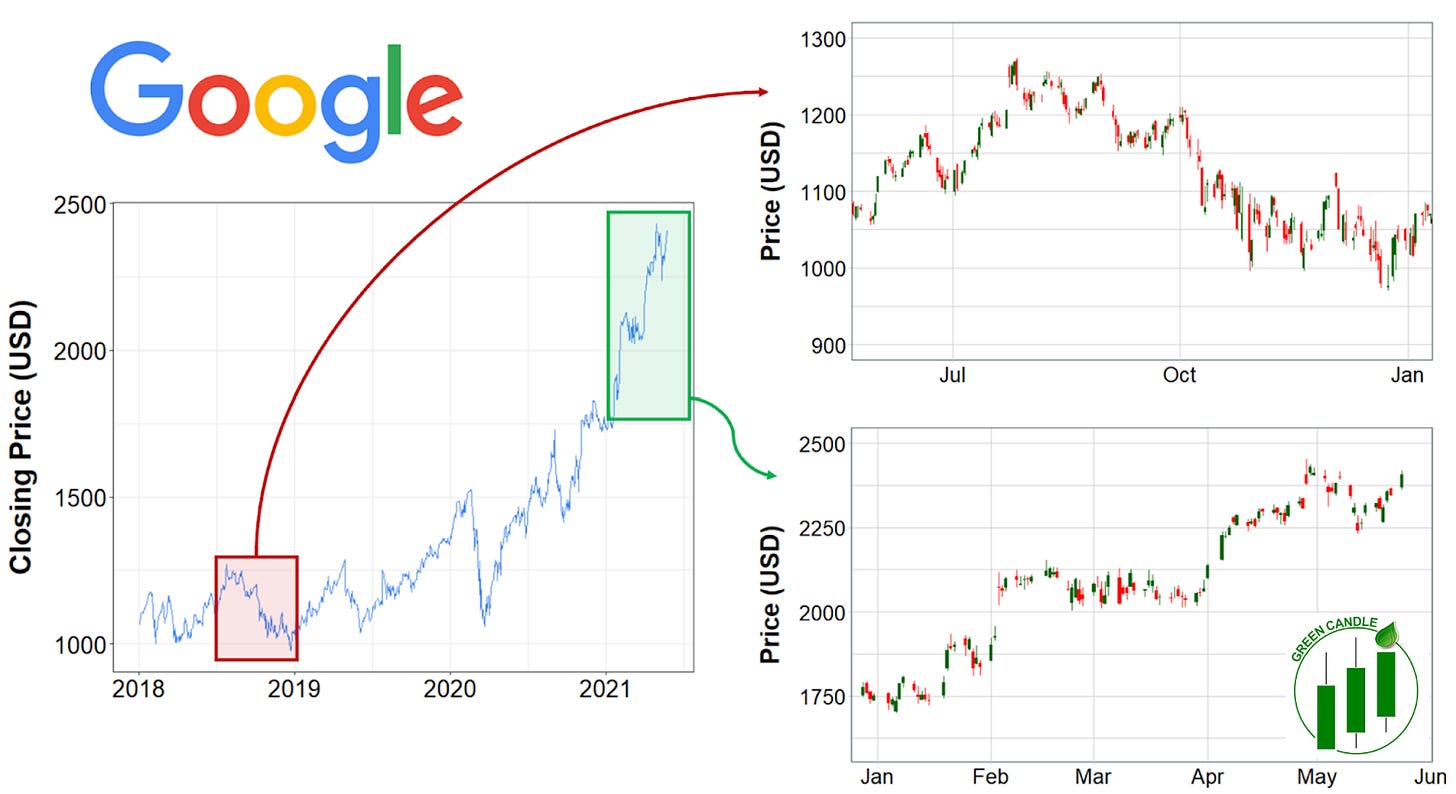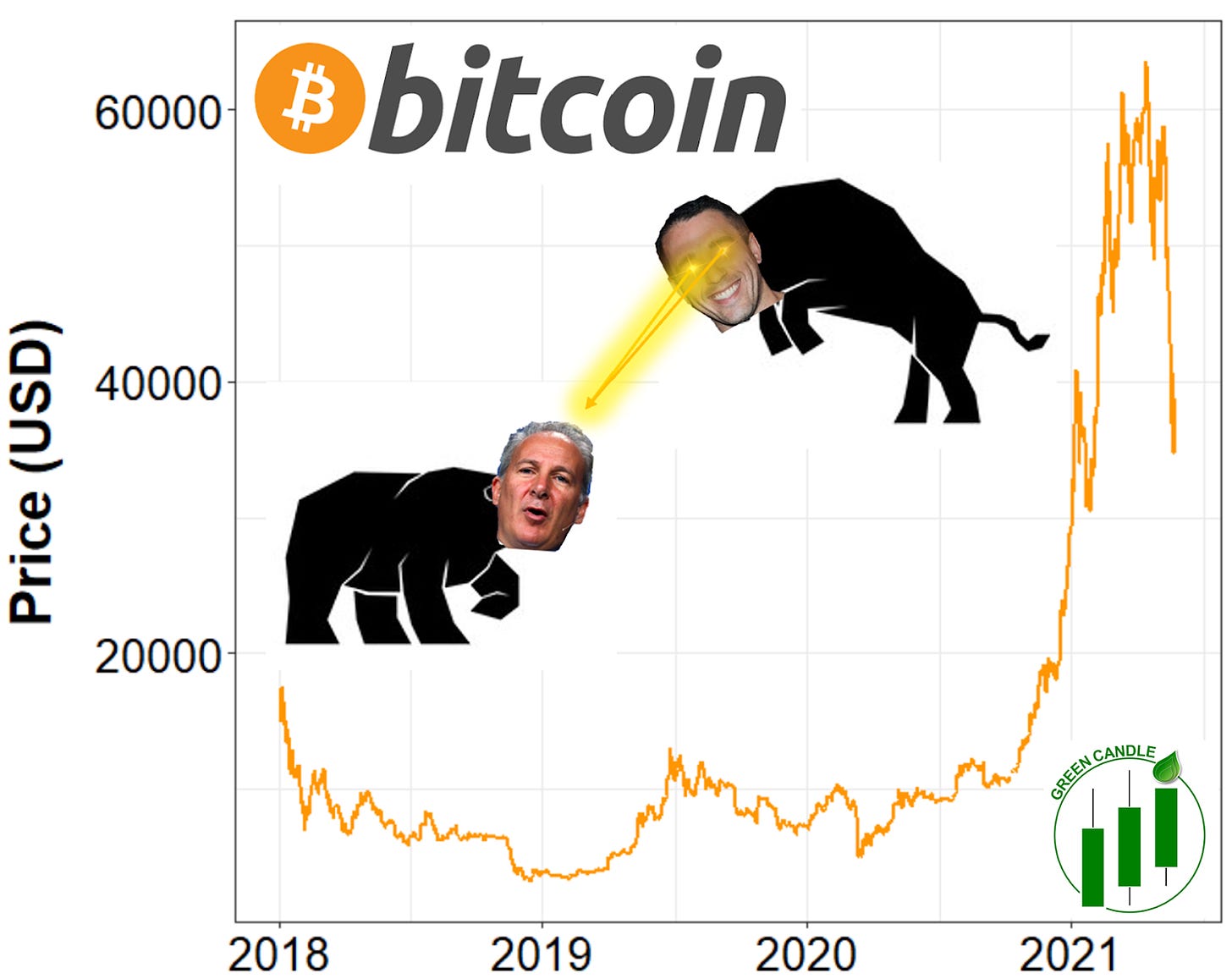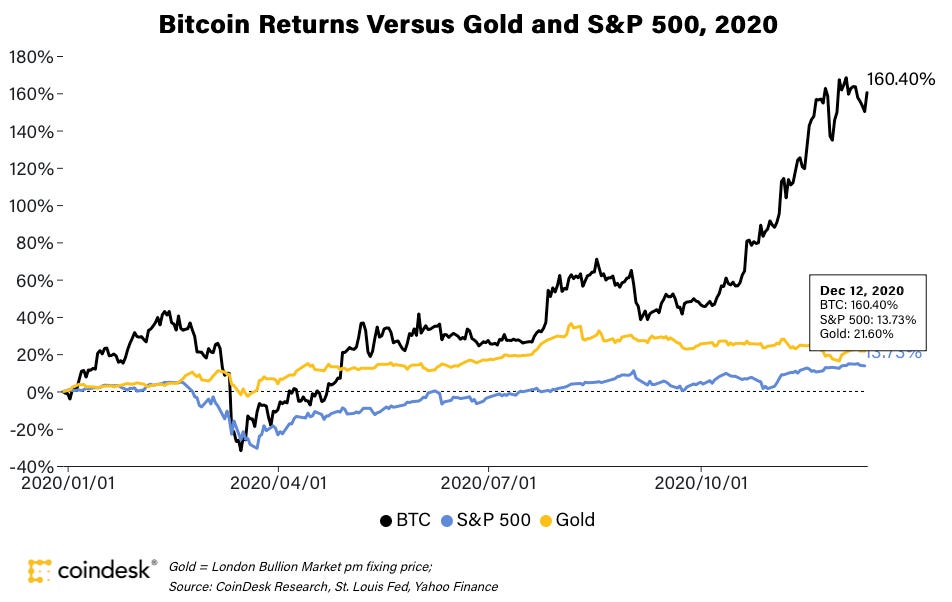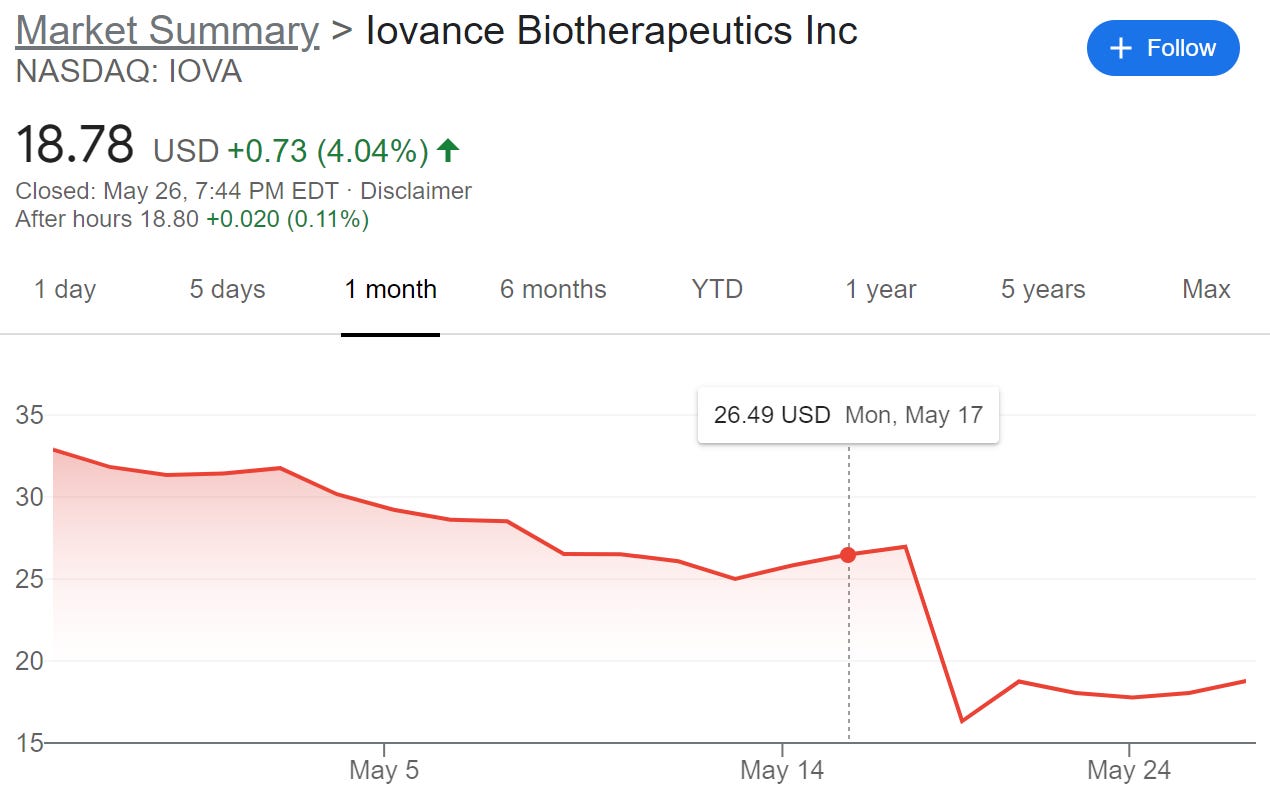Bitcoin Series #4: Bitcoin is too Volatile!
In our Friday series, we take a deep dive into different asset investments. The first asset we’re covering - which we will stick with over the next several weeks - is Bitcoin (BTC). Our goal with this weekly series is to familiarize readers with BTC and to address common anti-BTC arguments. For full disclosure, Brandon and Daniel are strong believers in Bitcoin and both have allocated portions of their portfolios to BTC (HODL baby).
Why is any investment volatile?
Before jumping into Bitcoin’s volatility, let’s cover some basics. According to Investopedia, “volatility represents how large an asset's prices swing around the mean price - it is a statistical measure of its dispersion of returns.” Volatility can emerge in an asset for a number of both internal and/or external factors.
Internal factors: changes to company leadership, product quality, ROI uncertainties, etc.
External factors: increased competition, economic downturn, government regulation, etc.
Even large, commonly considered “safe,” companies experience periods of volatility. For example, see Google’s price history below. There were periods of rapid rising and falling prices in 2018 and 2019, before crashing (along with the rest of the market) in early 2020 due to COVID-19. Since the 2020 crash, Google has skyrocketed but experienced its fair share of volatility along the way.
BTC shares a similar trend - volatile along the way (albeit more so than Google), but high year over year returns. The short term volatility in BTC may be hard to stomach for newcomers, but belief in the fundamental features of the technology (distributed and decentralized network, open source code base, built-in guards against inflation) keeps long-term HODLers bullish during even the most severe dips.
Is Bitcoin Volatile?
The short answer: yes. Cryptocurrencies in general tend to be more volatile by traditional “Wall Street” standards. General investment vehicles such as index funds or exchange-traded funds (ETFs) (some common examples are the S&P 500, DOW Jones, and the NASDAQ) tend to remain relatively stable over short time frames, so long as the economy is healthy. These funds are common, low-risk investments that, over the long term, average ~7% return year over year and experience little day to day movement (i.e., little short-term volatility). Bitcoin and other cryptocurrencies, on the other hand, experience greater short-term volatility. It’s not uncommon for Bitcoin to see double-digit price swings (up and down) within a single day. While this volatility often causes panic selling for new crypto investors, it's warmly embraced by more seasoned investors. In fact, many old wallets (those who hold coins for longer periods of time) view downturns as an opportunity to accumulate coins at a discounted price (they “Buy the Dip” a.k.a. BTD). Those long on BTC understand that the fundamental aspects of the technology drive the true worth of each coin and that short-term volatility does not change those fundamentals. They’re also able to zoom out and see the bigger picture. Despite large short-term price swings, BTC has had incredible annual returns. For example, in 2020 Bitcoin returned 160.4% compared to the S&P 500, which had a return of 13.7%. The return of the S&P 500 was ~2x its typical annual return while bitcoin has averaged 230% annual return since its creation in 2008.
Why is Bitcoin Volatile?
Although BTC is built to serve as a currency, it has not yet achieved full adoption. Until BTC is more fully adopted (and it seems to be gaining momentum, particularly from institutional players) as a safe store of value and/or a viable transactional currency, it will be subjected to factors that drive volatility in any other asset. For example, recent bouts of volatility have been driven largely by “bad news.” Bad news can drive any company’s price down. Last week, Iovance took a nosedive after the company reported that it would delay an application to the FDA:
In the crypto world, this “bad news” factor is commonly referred to as “fear, uncertainty, and doubt,” or FUD for short. In recent weeks, BTC FUD has centered primarily around energy usage, driven largely by a tweet from Elon Musk (see last week’s newsletter on Bitcoin’s energy usage to learn more about this issue). Unfortunately, FUD can cause panic, particularly in crypto newcomers, and lead to large sell-off events. Seasoned investors know, however, that the FUD does not change the underlying fundamentals of BTC.
Another factor driving BTC’s volatility is future uncertainty of regulation. Many fear that national governments will slow wide-scale BTC adoption by enforcing heavy taxation on investors. Although BTC’s decentralized protocol and anonymity combat these fears for longterm investors, short term investors looking to get in and out quickly must convert BTC back to fiat, which will draw the attention of federal agencies. Uncertainty over regulation creates uncertainty in the market, and until BTC reaches critical mass for adoption, this will likely continue to insert volatility in BTC prices.
Volatility is also a measure of where Bitcoin stands in what some call its “Four Year Cycle.” Every four years Bitcoin has a halving event, which we described in our first article of this series, What is Bitcoin (BTC)?. Following each halving event, the number of new coins mined per block is cut in half. This decreases the supply of coins and, assuming demand remains unchanged, creates a bull market. BTC experienced incredible returns for >12-months following the previous two halving events, and appears to be experiencing a similar bull run now. Specifically, following the halving event in November of 2012, the market went into a bull run extending into 2013 and the price of a single bitcoin increased 5507%. Similarly, following the 2016 halving event, a bull market extended into 2017 and the price of a single bitcoin increased 1325%. The last halving event occurred in May of 2020 and we are currently waiting to see how long the current bull run will last.
Volatility in 2021?
As with any investment, there are risks involved with BTC. Investors should expect volatility - at least in the short term - and plan accordingly. Based on previous bull runs, BTC tends to reach peak volatility towards the end of the year following a halving event (2013 and 2017). Based on this pricing history, it seems likely that we will experience periods of relatively high volatility throughout the rest of 2021. If you believe in BTC, ignore those stomach pains and HODL. Hell, maybe even use the down swings as an opportunity to accumulate more coinage!
Going forward
As we said in our introduction, we plan to address several arguments against BTC, one at a time, over the next several weeks. We hope that our weekly posts will encourage readers to learn more about this emerging technology.
Common arguments against BTC:
Be sure to check out our previous articles explaining Bitcoin and subscribe to get the new topics straight to your inbox!
BTC is too volatile
BTC is not physically backed by anything
BTC is used primarily by criminals for illegal activity
BTC is not a transactional currency (cannot be used to buy everyday items)
Governments will not allow it or will heavily regulate it
It’s easy to lose access to BTC wallet
Happy Friday everyone - get after it this weekend!
Stay up to date on Green Candle by subscribing to our newsletter and following us on Twitter and Instagram!
Brandon and Dan
Disclosure: The authors of this writing hold positions in cryptocurrency mentioned in this article. That cryptocurrency is Bitcoin. The article was written by Daniel Kuhman and Brandon Keys, and it expresses the author's own opinions. They are not receiving compensation for it. The information presented in this article is for informational purposes only and in no way should be construed as financial advice or recommendation to buy or sell any stock or cryptocurrency. Brandon and Daniel are not financial advisors. We encourage all readers to do further research and do your own due diligence before making any investments.








